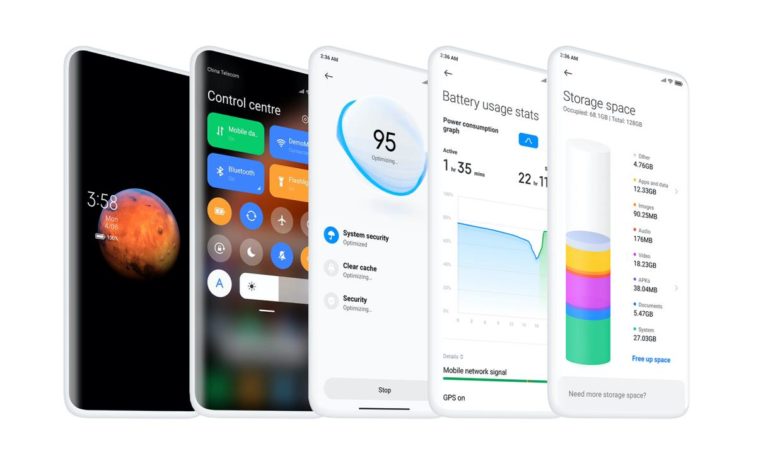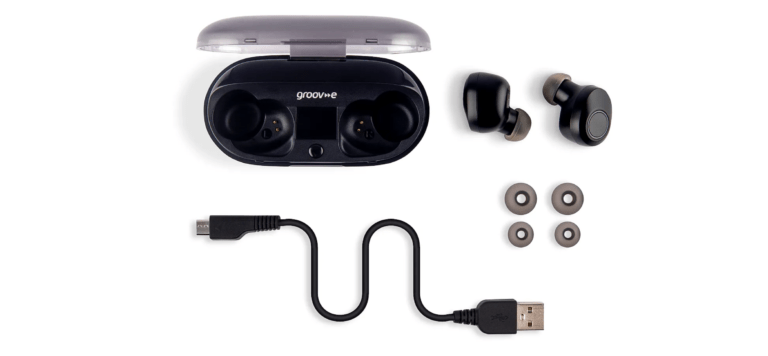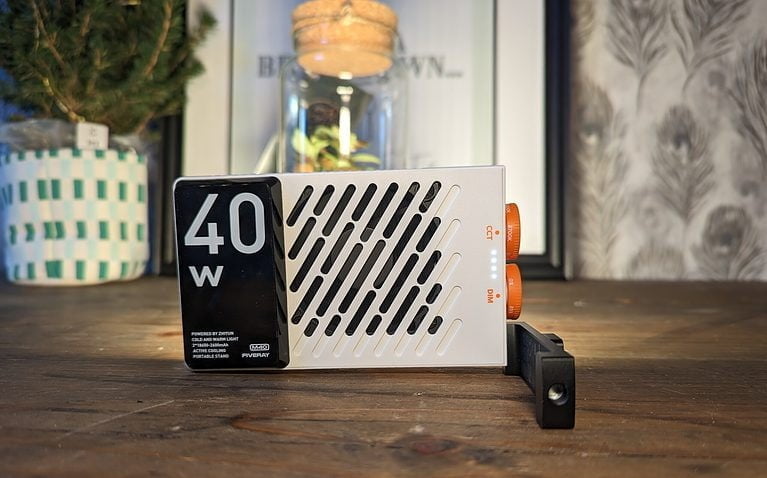Any links to online stores should be assumed to be affiliates. The company or PR agency provides all or most review samples. They have no control over my content, and I provide my honest opinion.
With the weather cooling and rain getting progressively worse, many of us will inevitably be suffering from damp within our homes.
Types of damp
Rising damp, penetrating damp and condensation are the three most common types of damp for residential properties.
Condensation is the most common kind of damp and the one that will increase the most during the winter months. The warm moist air condenses on windows and outside-facing walls which are cool.
Rising damp is caused by groundwater moving up through a wall or floor. It’s natural for walls and floors to allow a little water in, but it’s usually stopped from causing damage by a barrier called a damp-proof course or damp-proof membrane
Penetrating damp is caused by water leaking through walls. This type of damp may expand across your walls or ceiling, but this will move horizontally, rather than by travelling up walls (as is the case with rising damp).
While a dehumidifier can hold reduce the moisture in your walls from all types of damp, they are not very useful for penetrating or rising damp, and these are problems you will need to fix directly
Health issues associated with damp
Damp is a frustrating issue for many UK residents, it doesn’t just cause damage, but it promotes the growth of mould. This is especially true for condensation damp where you have a perfect climate of warm moist air for mould to grow.
Damp will often bring with it black patches, this is Black mould which produces produce spores – these allow mould to keep reproducing and growing. They are responsible for most health problems caused by damp and mould in the home.
These spores are allergens, which means they can cause various allergic reactions. That’s why inhaling or touching mould spores can cause health issues or make existing conditions worse.
These spores can have a negative effect on everyone, but people with existing respiratory or allergy issues will suffer more.
Respiratory issues caused by mould can include trouble breathing, a tight chest, coughing, and wheezing. These symptoms are usually mild but can become chronic if you’re exposed to mould spores over a long period of time.
Identifying mould risks and monitoring indoor air quality
Dew Point
The higher the humidity within the home, the higher the dew point is, which is the temperature at which air becomes saturated with water. At this point, if it is cooled further, the water will condense into dew.
- In a room with 60% humidity and air temperature of 20-degrees the dew point will be 12-degrees
- If the humidity was increased to 70% the dew point would increase to 14-degrees
- If the temperature was reduced to 16-degrees with 70% humidity, the dew point would be 10-degrees.
- If your room is 20-degrees and you drop the humidity to 50-degrees the dew point goes down to 9-degrees
What Is a Good Humidity Level in a House?
A good range of indoor humidity for comfort and health is between 30-60% during the cooler months of the year. Mould is likely to occur if the relative humidity indoors is 70% or more for long periods of time.
Keeping humidity levels under 50% also helps to minimise or control dust mites.
Having humidity levels below 30% can lead to dry skin and nasal passages, increasing the potential for respiratory illnesses. This is also why your mouth and nose dry out in air-conditioned hotels.
As you can see from the dew point section, condensation damp will occur at different temperatures based on humidity levels. With many homes having their heating set to 20-degrees, having a humidity level of 60% or higher means there is a relatively good chance of condensation on your windows throughout the cooler months, thanks to our delightful climate.
Monitor humidity and indoor air quality
It is not particularly hard to know when you have condensation damp, but you ideally want to prevent it happening in the first place.
The simplest solution would be a simple indoor digital thermometer and hygrometer so you can keep an eye on your room being too cold and humid. With a basic understanding of dew points, this can be an effective solution that will cost as little as £8.99. Alternative there are basic smart phone linked monitors for around £13.50.
| Preview | Product | Rating | Price | |
|---|---|---|---|---|

| Govee Room Thermometer Hygrometer, Bluetooth Digital Indoor... |
£11.99 | Buy on Amazon |
If you want to get a little smarter, you can get a hygrometer with dew point monitoring, saving you having to work out the risk level yourself. There are even small smart monitors from Tempo Disc that can be used to track dew point levels throughout the day.
| Preview | Product | Rating | Price | |
|---|---|---|---|---|

| Tempo Disc Wireless Thermometer, Hygrometer, Barometric... | Buy on Amazon |
Then if you want to get a little more serious about your indoor air quality, there is the Airthings Wave Mini which monitors multiple factors of indoor air quality and will also warn you of a health risk.
No products found.
There are many more indoor air quality monitors at ever-increasing prices, and I will cover these in a future post.
Types of dehumidifier
There are two types of dehumidifier, refrigerant and desiccant.
A refrigerant dehumidifier uses much the same process as your fridge at home. The refrigeration process cools a metal plate on to which moisture from the air condenses. These tend to be slower but also use less electricity with power consumption being less than 300w typically. They also work best in warmer rooms and their efficiency will drop off quickly at 18-degrees and below.
A desiccant dehumidifier differs from the refrigerant type above. Dessicant dehumidifiers absorb water from the air using a desiccant. These tend to use a lot of electricity, but at the same time, you need to run them for a shorter period of time. These work well at all temperatures, so they are good for using in particularly cold rooms.
While desiccant dehumidifiers became popular for a while due to their ability to remove moisture from the air, the general recommendation is to opt for a refrigerant-based model. These will work best for general all-day use to keep your whole home or specific rooms within a specific humidity level.
Best dehumidifiers in the UK for 2020
Best for Dehumidifier Larger Rooms or Homes
Inventor Dehumidifier EVA-II pro from £159.99
| Preview | Product | Rating | Price | |
|---|---|---|---|---|

| Inventor Dehumidifier EVA-II PRO 20L/Day, Digital Control... | Buy on Amazon |
Refrigerant dehumidifier – Power Consumption 260W – 3L water tank
4.6/5 with 418 reviews on Amazon
This well-reviewed dehumidifier has a massive 3L water tank combined with a 20L extraction rate and the option for continuous drainage via a tube, allowing you to leave it on for long periods and not worry about the tank being full.
Pro Breeze 12L from £154.99
| Preview | Product | Rating | Price | |
|---|---|---|---|---|

| Pro Breeze® 12L/Day Dehumidifier with Automatic Humidity... | £119.99 | Buy on Amazon |
Refrigerant/Compressor dehumidifier – Power Consumption 240W – 1.8L water tank
4.7/5 with 1260 reviews on Amazon
Physically smaller than the Inventor this should be a little more discrete in your home, especially if you have smaller rooms.
Most Efficient Dehumidifier
Meaco MeacoDry from £139.99
| Preview | Product | Rating | Price | |
|---|---|---|---|---|

| Meaco MeacoDry Dehumidifier ABC Range 10LB (Black Panel)... | £148.50 | Buy on Amazon |
Refrigerant/Compressor dehumidifier – Power Consumption 155W – 2.6L water tank
4.7/5 with 926 reviews on Amazon
With a 155W power draw, this would cost me about 26p to run 12 hours per day it can also run at 35dB making it one of the quietest options on the market. This makes it best for smaller homes.
Best Desiccant dehumidifier
EcoAir DD1 Classic MK5 from £184
| Preview | Product | Rating | Price | |
|---|---|---|---|---|

| EcoAir DD1 Classic MK6 Blue Desiccant Dehumidifier |... |
£199.99 | Buy on Amazon |
Desiccant dehumidifier – Power Consumption 300 – 580W – 2L water tank
4.6/5 with 1709 ratings
I have had this model for a few years, back when I suffered from damp issues within my home. With it being desiccant it is great for removing moisture quickly and in cold rooms, but with a peak 580W it can burn through quite a bit of electricity.
Best Dehumidifier and Air Purifier
Meaco 20L Low Energy Dehumidifier and Air Purifier from £259
| Preview | Product | Rating | Price | |
|---|---|---|---|---|

| Meaco 20L Low Energy Dehumidifier and Air Purifier 2 in 1-... | £259.99 | Buy on Amazon |
Refrigerant/Compressor dehumidifier – Power Consumption 219W – 6L water tank
If you want a dehumidifier to improve the air quality in your home (especially for asthma and allergy sufferers), then it would be advisable to get a 2-in-1 product that offers air purification through a HEPA filter. The filter is capable of removing pollen, dust mites, mould spores and pet dander.
Best Small and Affordable Dehumidifier
AUZKIN Dehumidifier 1000ml from £39.99
No products found.
Refrigerant dehumidifier – Power Consumption 40W – 1L water tank
As always with Amazon, it is awash with low-cost random brands, and most well-reviewed affordable options should suit. I picked this one because it has a larger capacity than many of the other options, we have just 500ml tanks, it is well-reviewed and it is cheaper than the similarly specced Pro Breeze Dehumidifier models (either 500ml or 1500ml).
Alternatives to a Dehumidifier for Condensation Damp
If you have a pervasive issue with damp throughout the house, then there is a good chance it is a ventilation issue.
A popular solution to this is a Positive Input Ventilation (PIV) where you have a fan unit which introduces fresh filtered air into the dwelling at a continuous rate, encouraging movement of air from inside to outside.
The most popular product that offers this functionality is the Nuaire Drimaster. This sits in your loft and draws air in from the outside, filters it then pushes it into your home.
It is generally recommended to get the heated model which will switch on a low energy heater to warm up the air pushes into the home during the colder months.
| Preview | Product | Rating | Price | |
|---|---|---|---|---|

| Nuaire Drimaster Eco Heat Condensation Control PIV Bundle... | £489.68 | Buy on Amazon |
I am James, a UK-based tech enthusiast and the Editor and Owner of Mighty Gadget, which I’ve proudly run since 2007. Passionate about all things technology, my expertise spans from computers and networking to mobile, wearables, and smart home devices.
As a fitness fanatic who loves running and cycling, I also have a keen interest in fitness-related technology, and I take every opportunity to cover this niche on my blog. My diverse interests allow me to bring a unique perspective to tech blogging, merging lifestyle, fitness, and the latest tech trends.
In my academic pursuits, I earned a BSc in Information Systems Design from UCLAN, before advancing my learning with a Master’s Degree in Computing. This advanced study also included Cisco CCNA accreditation, further demonstrating my commitment to understanding and staying ahead of the technology curve.
I’m proud to share that Vuelio has consistently ranked Mighty Gadget as one of the top technology blogs in the UK. With my dedication to technology and drive to share my insights, I aim to continue providing my readers with engaging and informative content.
Last update on 2025-07-16 / Affiliate links / Images from Amazon Product Advertising API








Morning,
I’m in need of a Dehumidifier for my Garage but not sure which to get, I’d like one where there are no filters that need changing and one that works at low temperatures, is this something you can help me with?
Thanks